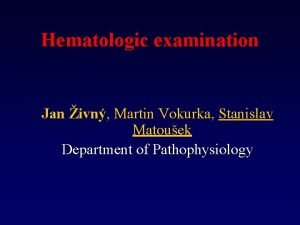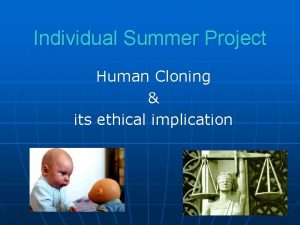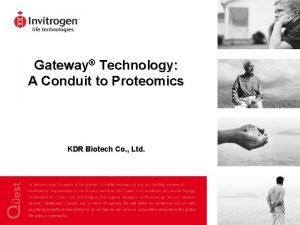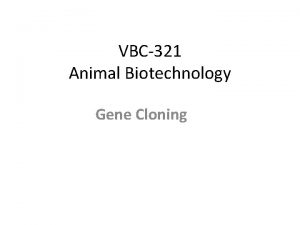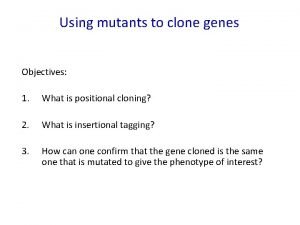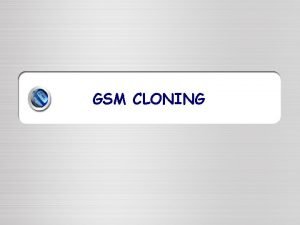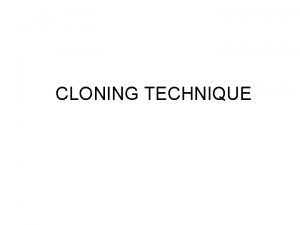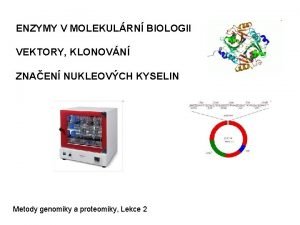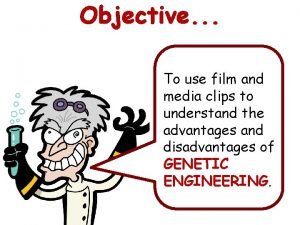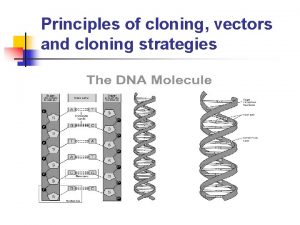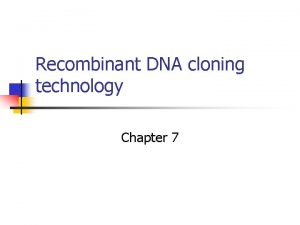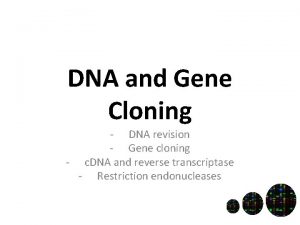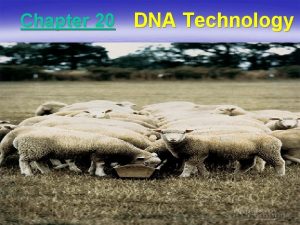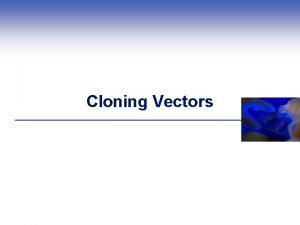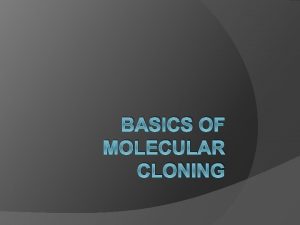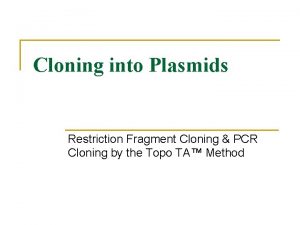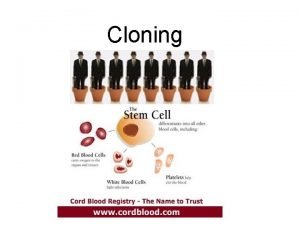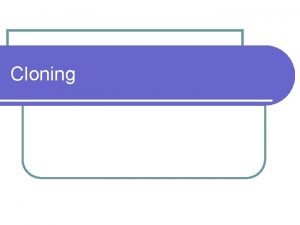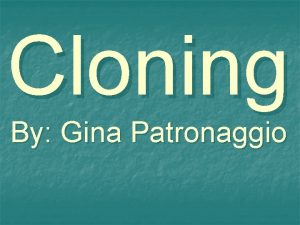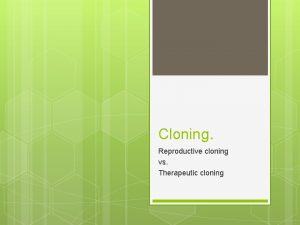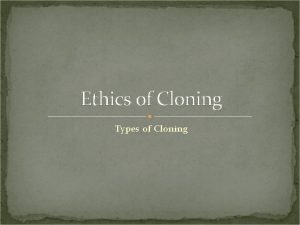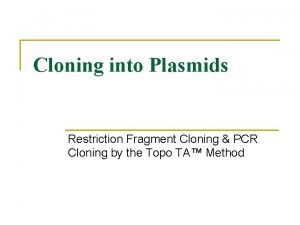DNA CLONING Dr Hams M A Mohamed Assistant


















- Slides: 18

DNA CLONING Dr. Hams M. A. Mohamed Assistant professor of Microbiology

DNA CLONING DNA cloning is the process of making multiple, identical copies of a particular piece of DNA. In a typical DNA cloning procedure, the gene or other DNA fragment of interest is first inserted into a circular piece of DNA called a plasmid.

The insertion is done using enzymes that “cut and paste” DNA, and it produces a molecule of recombinant DNA.

STEPS OF DNA CLONING 1 -DNA cloning is used for many purposes. As an example, let's see how DNA cloning can be used to synthesize a protein (such as human insulin) in bacteria. The basic steps are: 2 -Cut open the plasmid and "paste" in the gene. This process relies on restriction enzymes (which cut DNA) and DNA ligase (which joins DNA).

3 -Insert the plasmid into bacteria. Use antibiotic selection to identify the bacteria that took up the plasmid. 4 -Grow up lots of plasmid-carrying bacteria and use them as "factories" to make the protein. Harvest the protein from the bacteria and purify it.

HOW CUTTING AND PASTING DNA WAS DONE? How can pieces of DNA from different sources be joined together? A common method uses two types of enzymes: restriction enzymes and DNA ligase A restriction enzyme is a DNA-cutting enzyme that recognizes a specific target sequence and cuts DNA into two pieces at or near that site they are joined by DNA ligase, which seals gaps in the DNA backbone

Our goal in cloning is to insert a target gene (e. g. , for human insulin) into a plasmid. Using a carefully chosen restriction enzyme, we digest: The plasmid, which has a single cut site The target gene fragment, which has a cut site near each end Then, we combine the fragments with DNA ligase, which links them to make a recombinant plasmid containing the gene.


BACTERIAL TRANSFORMATION AND SELECTION Plasmids and other DNA can be introduced into bacteria, such as the harmless E. coli used in labs, in a process called transformation. During transformation, specially prepared bacterial cells are given a shock (such as high temperature) that encourages them to take up foreign DNA.

A plasmid typically contains an antibiotic resistance gene, which allows bacteria to survive in the presence of a specific antibiotic. Thus, bacteria that took up the plasmid can be selected on nutrient plates containing the antibiotic. Bacteria without a plasmid will die, while bacteria carrying a plasmid can live and reproduce. Each surviving bacterium will give a colony, of identical bacteria that all carry the same plasmid.


PROTEIN PRODUCTION The bacteria serve as “factories, " churning out large amounts of protein. For instance, if our plasmid contained the human insulin gene, the bacteria would start transcribing the gene and translating the m. RNA to produce many molecules of human insulin protein.

PROTEIN PRODUCTION

Once the protein has been produced, the bacterial cells can be split open to release it. There are many other proteins and macromolecules floating around in bacteria besides the target protein (e. g. , insulin). Because of this, the target protein must be purified, or separated from the other contents of the cells by biochemical techniques. The purified protein can be used for experiments or, in the case of insulin, administered to patients.

USES OF DNA CLONING DNA molecules built through cloning techniques are used for many purposes in molecular biology. A short list of examples includes: 1 -Biopharmaceuticals. DNA cloning can be used to make human proteins with biomedical applications, such as the insulin mentioned above. Other examples of recombinant proteins include human growth hormone, which is given to patients who are unable to synthesize the hormone, and tissue plasminogen activator , which is used to treat strokes and prevent blood clots. Recombinant proteins like these are often made in bacteria.

2 -Gene therapy: In some genetic disorders, patients lack the functional form of a particular gene. Gene therapy attempts to provide a normal copy of the gene to the cells of a patient’s body. For example, DNA cloning was used to build plasmids containing a normal version of the gene that's nonfunctional in cystic fibrosis.

3 -Gene analysis. In basic research labs, biologists often use DNA cloning to build artificial, recombinant versions of genes that help them understand how normal genes in an organism function

 Hamscom
Hamscom Harm reduction worksheets
Harm reduction worksheets Hams alcohol taper
Hams alcohol taper Granulocytic lineage
Granulocytic lineage Handiham
Handiham Human cloning cons
Human cloning cons Directional topo cloning
Directional topo cloning What is cloning
What is cloning Cloning
Cloning Plasmid
Plasmid Cloning pros and cons
Cloning pros and cons Cloning vector
Cloning vector Map based cloning
Map based cloning Gsm cloning
Gsm cloning Reproductive cloning process
Reproductive cloning process Topo ta cloning
Topo ta cloning Advantages and disadvantages of cloning
Advantages and disadvantages of cloning Identity cloning and concealment
Identity cloning and concealment 5' overhang
5' overhang



